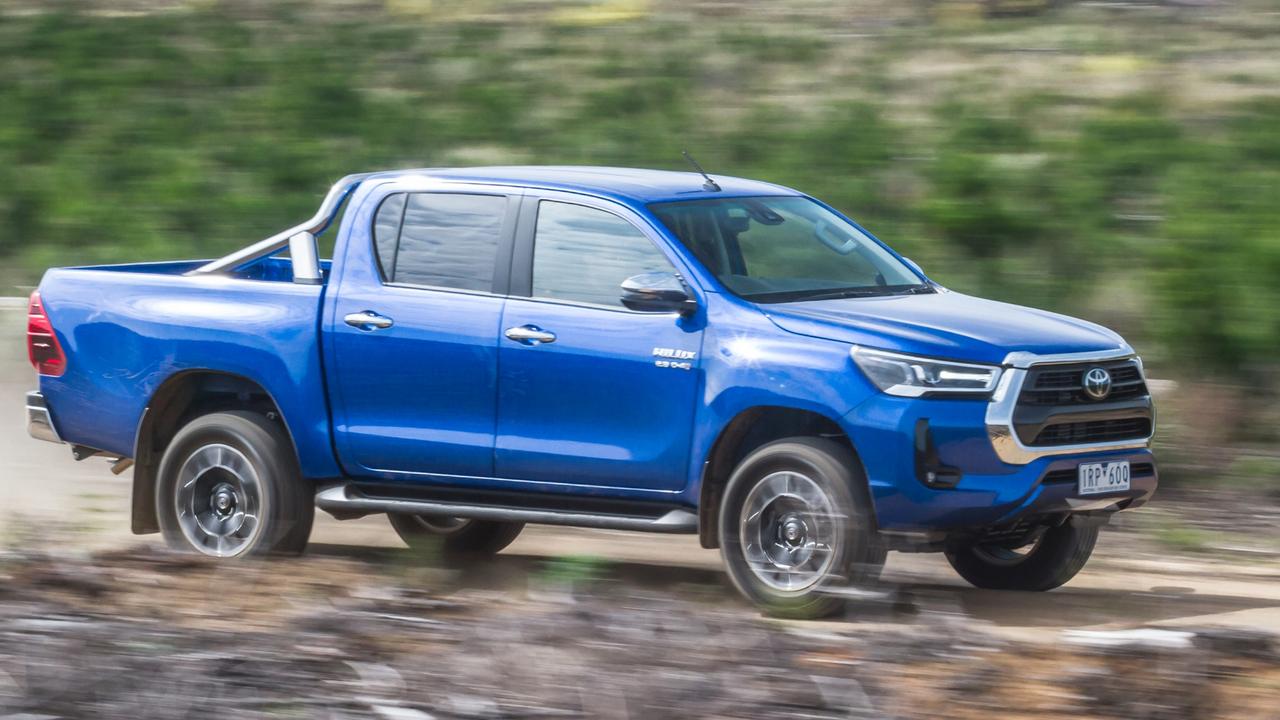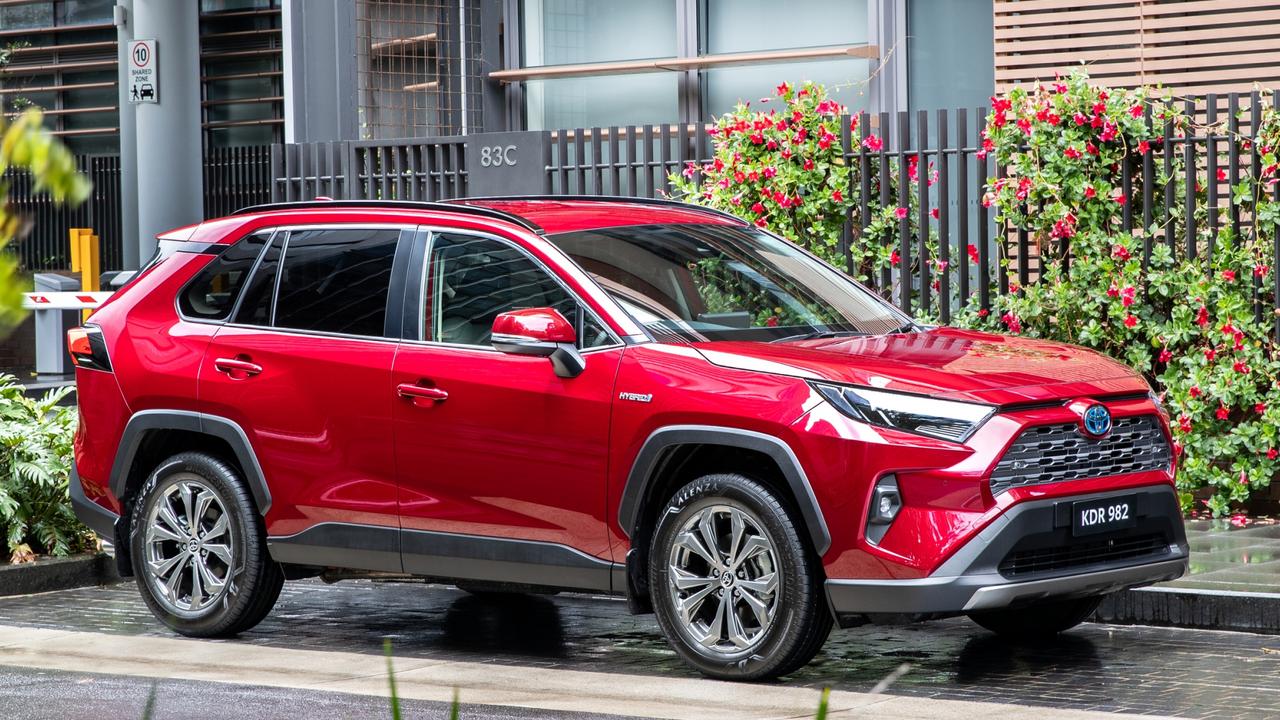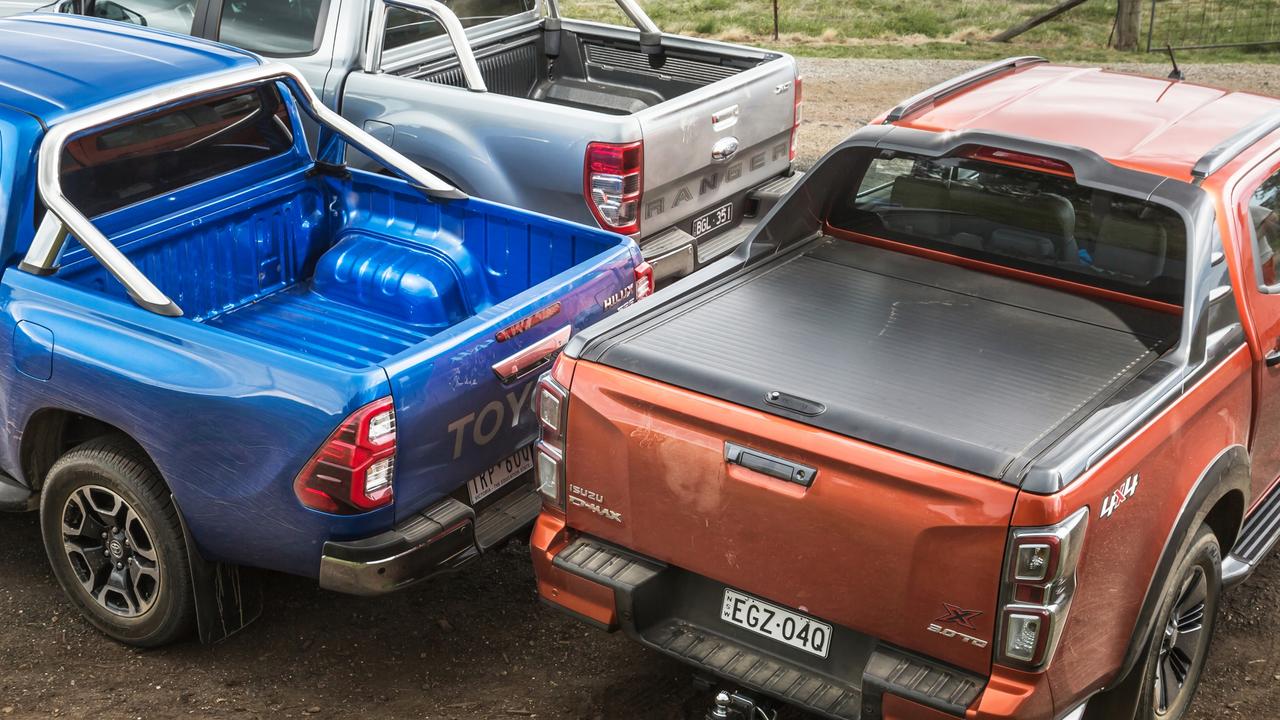Toyota HiLux tops the sales charts for seventh consecutive year
The annual automotive sales figures have been released and our obsession with US-style pick-ups shows no signs of abating, despite increased EV sales.
Toyota’s HiLux has been crowned the country’s best-selling vehicle for the seventh year in a row.
The HiLux has spearheaded a bumper year for Toyota, which was named Australia’s favourite brand for the 20th consecutive year, notching up 231,050 sales.
Overall, Australians bought 1,081,429 vehicles last year, a three per cent increase on the year before.
Five of the top ten selling vehicles were Toyotas: the Corolla was the country’s best selling car, the RAV4 SUV was the best-selling SUV and the LandCruiser and Prado each made the top ten.
Ford’s Ranger ute was the second-best selling vehicle last year, followed by the RAV4.
After a slow start to the year due to stock shortages, the new-car market bounced back strongly in the second half as supply improved.
That’s good news for new-car buyers, who have been hit with price rises and long delivery days due to a shortage of semiconductors, the tiny computer chips that power on-board electronics.

Some of the big trends to emerge in 2022 include the explosive growth of Chinese brands and growing adoption of electric vehicles.
Tesla sold close to 20,000 vehicles last year, up from roughly 12,000 the year before. Supply problems have hampered Ev sales, though, and they still make up just 3 per cent of new-car sales.
Chinese brand MG continues to rocket up the sales charts, outselling established brands such as Volkswagen, Subaru and Nissan on its way to number seven on the sales charts with almost 50,000 sales.
The growth has been fuelled by mainstream carmakers to turn their back on cheap entry-level cars such as small hatchbacks, which traditionally have very slim profit margins.
Kia is another brand on the move. It has overtaken its stablemate Hyundai to become the country’s third most popular brand behind Toyota and Mazda.
At the same time, some traditional favourites are disappearing from Australian driveways. Honda’s sales continue to plummet, while Nissan has dropped out of the top ten for the first time in recent memory. Volkswagen has also struggled to deliver cars due to supply issues – sales were down almost 25 per cent in 2022.

Federal Chamber of Automotive Industries chief executive Tony Weber said the new-car market should continue to rebound in 2023.
“There’s a lot of pent up demand in the system that needs to be delivered to the market. So I think we’re looking pretty strong going into 2023. Having said that, obviously interest rates have gone up throughout the year. That’s going to have some impact. We have Covid flaring up in China in and that may impact the factories. So like the last three years, there’s still uncertainty in the international environment,” he said.

The sales results show that Australians are becoming more like Americans in their automotive tastes.
The top 10 is dominated by big, thirsty trucks and four-wheel-drives, while economical hatchbacks are being shunned by buyers.
Four utes make up the top 10, while the large Toyota Prado and LandCruiser are also among the top sellers.
As a result, Australia’s vehicle emissions are significantly higher than Europe.
Mr Weber said the trend presented challenges for politicians looking to legislate for lower vehicle emissions.
“There is a real challenge there that Australians like to buy larger cars that are heavier and create more CO2. This is not a new thing. This has been something that’s been going on for at least 60 years in Australia. We’ve always driven large cars by international standards. We need to be cognisant of this. And that’s why we need to develop a CO2 standard that recognises the wants and needs of Australians and how we use our cars,” Weber said.

Toyota’s sales and marketing vice president Sean Hanley believes hybrids can provide an immediate solution to the problem.
The brand sold more than 70,000 hybrids last year.
“I think that gives an indication that the market is speaking,” he said.
“Hybrid technology is an affordable and practical solution to reduce both fuel costs and tailpipe emissions today. And that’s the critical part of this story: today,” he said.




